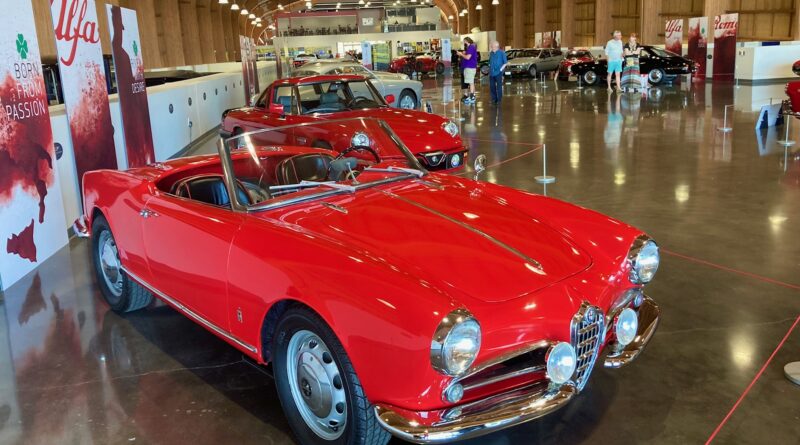Whose Cars Really Are Crap?
I sometimes get my best material from plagiarizing other people’s ideas. What could go wrong?
Take cars, for example. What could possibly be new there? It’s been 135 years of people screwing up driving those things, doing idiotic stuff, taking on steering wheels while in altered states, and whatever else you can think of.
A couple months ago I found myself perusing a used books website and came upon a book I vaguely remembered hearing about, PJ O’Rourke’s “Driving Like Crazy.” I thought, ‘What the hell, it’s five bucks.’ So I bought it along, of course, with a couple other ‘oh, what the hell it’s five bucks’ books.
Well, Mr. O’Rourke wastes no time diving wildly into an inspired diatribe about the desecration and destruction of the American car. I got all the way to the eighth page of the introduction before I started dog-earing pages and making mental notes. He had already hit on a favorite whine of mine (and no, not Pinot Noir) about car journalists and enthusiasts, especially the modern day versions. They all think European cars (and mostly Japanese, too) have always been superior to American cars. When I hear that I invariably end up sitting back thinking, ‘Are you people nuts?!’ Did you ever drive those things back when they were new? They were shit!
How can you say a 1968 Datsun 520 pickup was EVER superior to a Ford F-150, or even a Ford Ranger. Or, how about a ’68 Alfa Romeo Spider Veloce being superior to a Chevy Camaro convertible? Have you ever driven those cars? WTF! On American roads and freeways those things were high strung sewing machines just waiting to spin themselves into overheating or blowing a head gasket or just taking a complete shit on the freeway. God forbid you go on any kind of journey in those things. You could be sure you’d never get there without at least a couple breakdowns. They were crap. I don’t know, that was the Cheech and Chong-induced high times where supposedly any misadventure was ‘fun.’ ‘Hey, that was cool, man!’ No, it wasn’t.
American cars were simple, straightforward, durable, reliable. You could beat the crap out of them and they would just keep running. Bomb down the freeway at 90 for hours on end. They just kept going. When you pulled over for gas or a potty break, it seemed like they were asking when we could get going again.
Don’t dare try that with a European car of that era. Driving those things always started with, ‘I wonder how far I’ll get?’ Reliability was shit. I bought a brand new ’78 Fiat 124 Spider when I got out of college and soon learned that lesson. When my boss saw it he laughed and said, “Ah, Fix It Again Tony!”
I was always working on that thing. Always fixing it, like trying to eliminate the warm weather cooling system vapor locks, or replacing blown head gaskets because they decided an aluminum head on a cast iron block was a great idea. Ever hear of different coefficients of thermal expansion guys? No kidding, you say! Yeah, they didn’t think about it much either. It had dual plugs and dual sets of points; some models you had to pull the whole distributor just to do a tuneup. ‘Are you F’ing kidding me?!’
I remember buddies who used to brag about how many times they had rebuilt the flat-4 engines in their Volkswagens, like it was a badge of honor. I thought it was stupid. You actually like driving at 55, with the specter that if you break 65 you’ll probably blow your engine? You’d really rather be in the garage re-building that POS instead of driving it? They are, after all, first and foremost, intended to be driven. Wow, another mindboggling concept….
Granted, American cars didn’t have the greatest fit and finish, but you know what – they ran and ran (But hey, Ferrari fit and finish back then was shit, too). Those American straight 6s and V8s were simple, easy to tune up and work on, and didn’t need the oil constantly checked to make sure it was full. People always seem to get enamored with complexity. We forget the most basic tenet of good engineering and elegant design is simplicity; complexity is the enemy of reliability, of inexpensive maintenance, of cost-effective production and use.
And those Japanese cars? Oh, man, they were so cheaply built I sometimes wondered how the hell they stayed together – well, sometimes they didn’t. I had a co-worker who drove a Datson 520 pickup. You know, one of those things that looks like a pickup, but can’t really carry anything in the bed but groceries where they get soaking wet in the rain on the way home. Really useful. Almost room for half a sheet of plywood – almost. Spectacularly utilitarian.
Anyway, one day he was complaining how it was pulling pretty hard on the freeway coming to work. I stuck my head under the left front wheelwell to find a nearly disconnected simple little turnbuckle. It was what they used to connect the steering tie rod to the wheels. You know, just like the kind of turnbuckle you can find down the certified auto parts aisle at your local True Value Hardware store. It’s near the same aisle we aerospace engineers would go down when we were looking for FAA certified airplane parts – NOT! If that stupid turnbuckle had gone, he would have been gone. Really quality construction.
So, yeah, I think collectors and journalists make way too much about the technology and design of European engines and mechanicals. American cars have always been rugged, reliable, and built with a purpose – move us big, ugly Americans around our big, beautiful country in big, roomy cars with bench seats comfortably sized for six chubbies with some sleeping bags and several suitcases thrown in the back of our 20-foot station wagon land yachts to porpoise us around the land of endless freeways. Yes! That’s how it should be!
I don’t want some little, squirrelly foreign job that barely accommodates my big American ass. I don’t want to sit in those undersized buckets and rub elbows with my latest girlfriend on an 8 hour drive where I will soon be swatting her arm away because after four hours her pointy little elbow has put a blister on mine. I don’t want to travel with just an overnight bag (do they even make those for guys – I hope not) – I want to be able to bring all my shit if I want to!
It’s true foreign and American cars were built for different purposes. Foreign cars were for shorter drives at much slower speeds. They were taxed based upon engine displacement (yet another bizarre taxing method invented by socialists). And, let’s face it, the Japanese in particular were a smaller group of people, and their cars reflected it. But, when they started importing those things here, in general they couldn’t stand up to the punishment, especially the Euro versions. They were high maintenance, expensive, and generally considered POS’s. Being fun to drive (short distances) was about their only redeeming virtue.
Anyway, you get the idea. European and Japanese cars, especially the old, ‘collector’ kinds, couldn’t hold a candle to good, old, American Iron. From a daily perspective, American cars were more practical, more reliable, more utilitarian, and less expensive to maintain. Maybe not as nimble, but a lot of fun in their own way. So, I don’t want to hear any more talk about how much better foreign cars have always been than American cars. Back in the day, it wasn’t true. But now, all you romanticists out there have forgotten the inconvenient truths of owning one of those foreign jobs. I guess it’s like your old girlfriends – you only remember the good times, not all those days when she was wigging out. Did you forget who invented the SUV class? These days if you don’t have that and a truck, you’re missing out on the next land yacht to take you around this great country. Now, go get into your American SUV or your F-150 and kick some ass!




